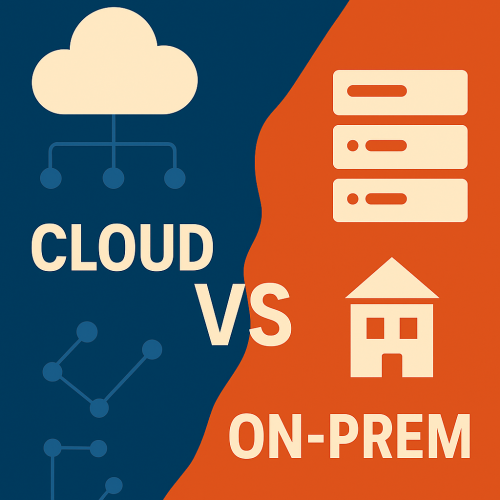Cloud vs. On-Prem: Revisiting the Debate Network Professionals Can’t Ignore
For years, the cloud has been positioned as the inevitable destination for enterprise IT. Its promise? Elasticity, speed, and freedom from infrastructure headaches. But for those of us who operate, architect, and manage networks at scale, the reality is far more nuanced. The debate between hosting infrastructure in the cloud or keeping it on-prem isn’t just alive — it’s heating back up.
In this article, we’ve rounded up key industry perspectives and data points to help you reevaluate where your workloads truly belong. While cloud services like AWS and Azure have their place, there’s a compelling — and increasingly popular — case for owning and operating your own hardware.
The Cloud’s Original Pitch — and Its Catch
The cloud pitch was simple: move fast, pay only for what you use, and stop worrying about the hardware. It worked — especially for startups and teams focused on software delivery. Gartner even predicted that over 90% of business innovation would be cloud-dependent by 2025 (Gartner, 2023).
But as workloads grew and companies matured, bills piled up. What once seemed like operational freedom began to feel more like financial handcuffs — particularly for network-heavy operations with persistent traffic, large datasets, or predictable usage patterns.
The Hidden Costs: It’s Not Just About Storage
Cloud pricing isn't always intuitive. The real costs show up in ways many teams don't expect until it's too late: egress fees, I/O charges, and scaling traps.
A great example: 37signals, the parent company behind Basecamp and HEY, recently announced they were moving workloads off the cloud. Why? Because they expect to save over $1 million annually in infrastructure costs. (37signals blog)
The Register put it bluntly:
“The cloud is just someone else’s computer — and it’s expensive.”
(The Register, 2023)
On-Prem = Performance, Control, and Predictability
For network professionals, control and visibility are non-negotiable. On-prem infrastructure offers:
- Lower, consistent latency
- Deeper observability into traffic, hardware, and anomalies
- No surprises on billing
- Regulatory confidence in data locality and security
A16Z’s famed report, "The Cost of Cloud: A Trillion Dollar Paradox," argues that at scale, cloud can kill margins and slow iteration.
(Andreessen Horowitz, 2021)
Hybrid Cloud Is Common — But Often Transitional
Yes, many teams operate in a hybrid model. But IDC reports that over 70% of enterprises have repatriated workloads from cloud to on-prem over the last three years. Why? Performance bottlenecks, cost, and compliance top the list. (IDC)
Hybrid isn’t always a strategy — sometimes it’s just a staging area.
On-Prem Has Changed — and It’s More Accessible Than Ever
Owning infrastructure used to mean costly CapEx, long procurement cycles, and overbuilt systems. That’s no longer the case.
- Refurbished enterprise gear from vendors like Arista, Juniper, and Dell lets you scale smartly.
- Open networking and automation tools mean less time in the rack and more time on delivery.
- Energy efficiency and hardware reliability have improved dramatically in the last decade.
Supermicro's TCO whitepaper notes that in many cases, the three-year total cost of on-prem is 40–60% lower than cloud alternatives when workloads are stable.
(Supermicro TCO)
Final Thoughts
Public cloud still has its place — for bursty compute, edge delivery, and early-stage scaling. But for many network operations teams, the pendulum is swinging back. Reassessing what’s truly best for your workload is not a sign of regression — it’s a sign of maturity.
At Terabit Systems, we’ve spent over a decade helping network operators build out reliable, high-performance infrastructure with high-value gear — without vendor lock-in or runaway costs. If you’re thinking about repatriating workloads or expanding your on-prem footprint, we’re here to help you run the numbers and gear up the right way. Just click here to email a Terabit rep today or call +1 (415) 230-4353 to find out how your network works best on-prem.

